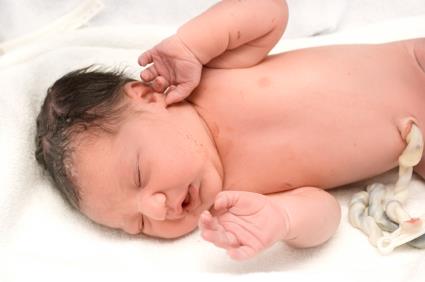The placenta contains so many blood vessels that come from the mother and connects with the baby through the umbilical cord. Your baby will receive nutrients and oxygen through the placenta – these nutrients come from your bloodstream and are transferred to your baby along the umbilical cord. There are also two arteries to return waste products and deoxygenated blood from your baby back to the placenta. It means that the umbilical cord is important for your baby to grow in the uterus, but many women ask one common question: What happens to the umbilical cord after birth? Keep reading to learn more about it.
What Happens to the Umbilical Cord After Birth?
- The first thing to know is that your midwife will clamp the umbilical cord about 4 cm from the belly button of your baby with a plastic clip – they will place another clamp close to the placenta. They will then cut the cord between the clamps, leaving a 3 cm long stump on your baby's belly button. Cutting the cord won't be painful because it doesn't have any nerves.
- The umbilical stump usually dries out and drops off within 15 days after your baby is born. The belly button will heal in about a week or so after the stump has fallen off. It is important for you to keep the area clean until the stump falls off and your baby's belly button heals completely. You should call your healthcare provider if you notice any discharge or bleeding from your baby's belly button.
 Similarly, the cord will be expelled from you within half an hour after birth because it's no longer required. A new cord will develop when you become pregnant once again.
Similarly, the cord will be expelled from you within half an hour after birth because it's no longer required. A new cord will develop when you become pregnant once again.- Your midwife may also take a blood sample from your umbilical cord to test for sickle-cell anemia and check the rhesus type of the blood of your baby. This becomes more important in case your umbilical cord has only one artery that increases the risk of your baby having problems related to bones, heart, kidneys or intestines.
How to Take Care of Your Baby's Stump
It is not enough to know what happens to the umbilical cord after birth but you also need to understand how to take the right care of your baby's stump.
- The most important thing is to keep the stump clean and dry. Be sure to wash your hands before and after you handle your baby's stump.
- Give your baby a bath or simply top and tail him with a moist flannel to keep the stump clean. You can add a mild baby cleanser to his bathwater for cleaning.
- Remember, getting your baby's stump wet won't cause any infection so long as you dry the cord afterwards.
- Select loose clothes for your baby to ensure the air gets to the stump. Also, make sure his nappy isn't causing any friction to the wound.
- Avoid using any antiseptic to keep the stump clean.
- Be sure to keep your baby's stump clean even if he's born prematurely. He will spend time in special care, so you may not be able to give him a bath during that time. Talk to the neonatal staff to learn how to keep your baby's stump clean.
When to Worry
Now that you know what happens to the umbilical cord after birth, it is equally important to understand when you should worry about your baby's stump. In most cases, you don't have to worry if your baby's stump looks mucky while healing. This usually doesn't indicate any infection. It is, however, important to go to see your baby's doctor if he's showing the following symptoms:
- His stump is smelly, swollen or weepy.
- His naval is red or swollen.
- He's lethargic and has fever.
Your baby's cord may take 10 days to heal completely, and during this time, it is normal to see lumpy flesh in the wound. You may want your midwife to check it if the flesh between the stump remains sore after a couple of weeks. Your doctor may recommend sealing it through a painless procedure called cauterization in which your doctor will use a silver nitrate stick to do the job.
